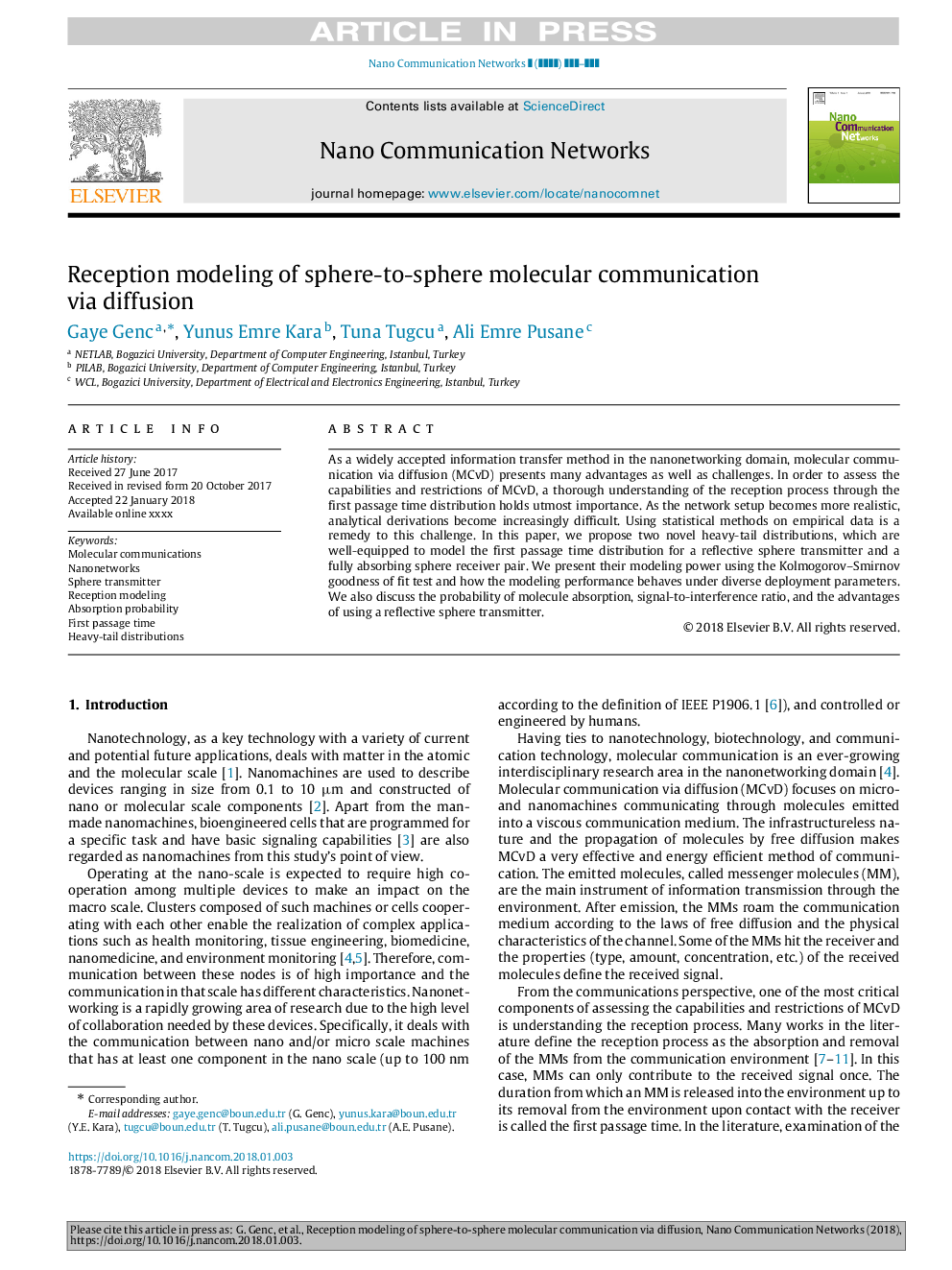| Article ID | Journal | Published Year | Pages | File Type |
|---|---|---|---|---|
| 6886025 | Nano Communication Networks | 2018 | 12 Pages |
Abstract
As a widely accepted information transfer method in the nanonetworking domain, molecular communication via diffusion (MCvD) presents many advantages as well as challenges. In order to assess the capabilities and restrictions of MCvD, a thorough understanding of the reception process through the first passage time distribution holds utmost importance. As the network setup becomes more realistic, analytical derivations become increasingly difficult. Using statistical methods on empirical data is a remedy to this challenge. In this paper, we propose two novel heavy-tail distributions, which are well-equipped to model the first passage time distribution for a reflective sphere transmitter and a fully absorbing sphere receiver pair. We present their modeling power using the Kolmogorov-Smirnov goodness of fit test and how the modeling performance behaves under diverse deployment parameters. We also discuss the probability of molecule absorption, signal-to-interference ratio, and the advantages of using a reflective sphere transmitter.
Related Topics
Physical Sciences and Engineering
Computer Science
Computer Networks and Communications
Authors
Gaye Genc, Yunus Emre Kara, Tuna Tugcu, Ali Emre Pusane,
